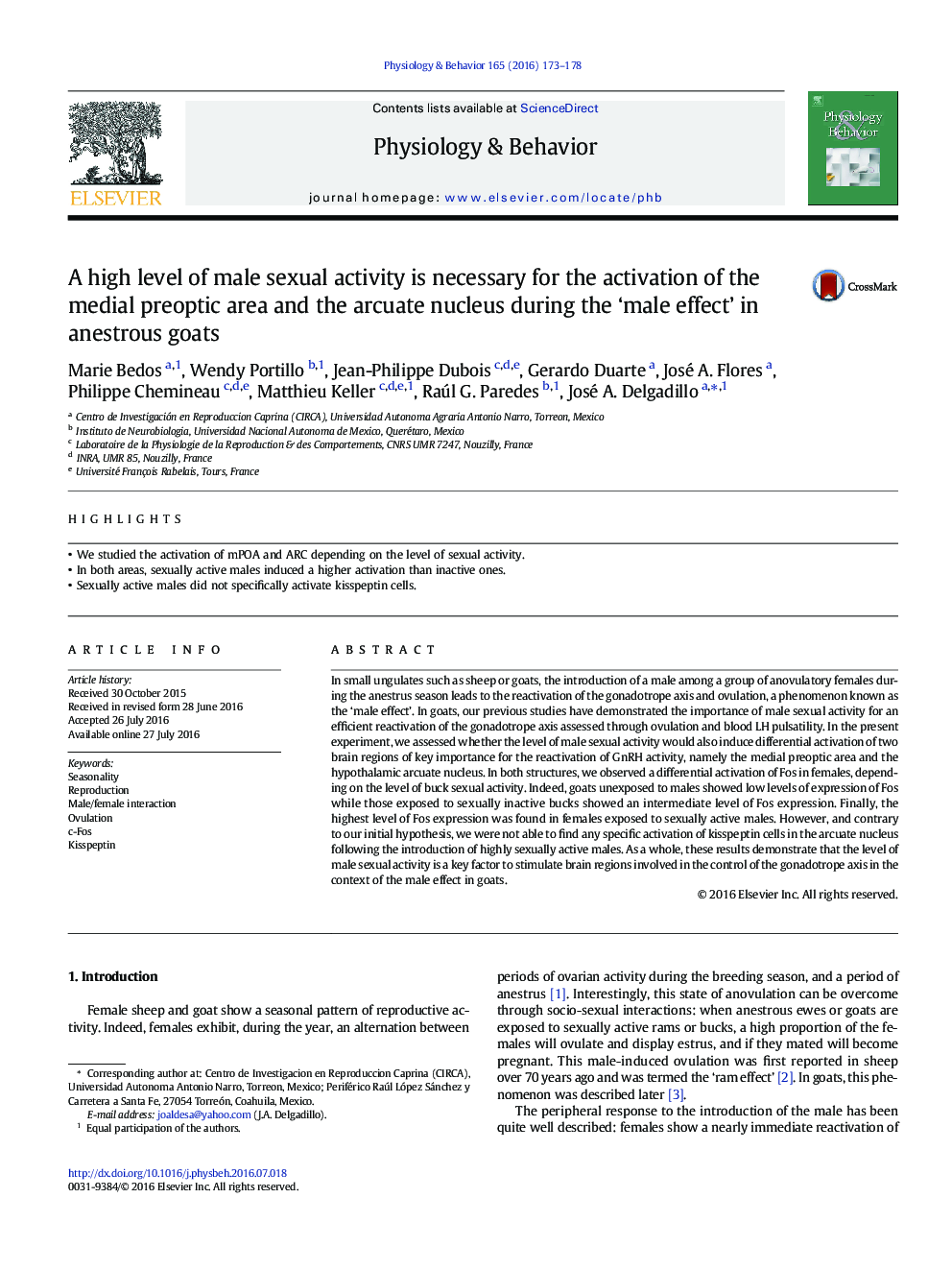| Article ID | Journal | Published Year | Pages | File Type |
|---|---|---|---|---|
| 5922780 | Physiology & Behavior | 2016 | 6 Pages |
Abstract
In small ungulates such as sheep or goats, the introduction of a male among a group of anovulatory females during the anestrus season leads to the reactivation of the gonadotrope axis and ovulation, a phenomenon known as the 'male effect'. In goats, our previous studies have demonstrated the importance of male sexual activity for an efficient reactivation of the gonadotrope axis assessed through ovulation and blood LH pulsatility. In the present experiment, we assessed whether the level of male sexual activity would also induce differential activation of two brain regions of key importance for the reactivation of GnRH activity, namely the medial preoptic area and the hypothalamic arcuate nucleus. In both structures, we observed a differential activation of Fos in females, depending on the level of buck sexual activity. Indeed, goats unexposed to males showed low levels of expression of Fos while those exposed to sexually inactive bucks showed an intermediate level of Fos expression. Finally, the highest level of Fos expression was found in females exposed to sexually active males. However, and contrary to our initial hypothesis, we were not able to find any specific activation of kisspeptin cells in the arcuate nucleus following the introduction of highly sexually active males. As a whole, these results demonstrate that the level of male sexual activity is a key factor to stimulate brain regions involved in the control of the gonadotrope axis in the context of the male effect in goats.
Related Topics
Life Sciences
Biochemistry, Genetics and Molecular Biology
Physiology
Authors
Marie Bedos, Wendy Portillo, Jean-Philippe Dubois, Gerardo Duarte, José A. Flores, Philippe Chemineau, Matthieu Keller, Raúl G. Paredes, José A. Delgadillo,
